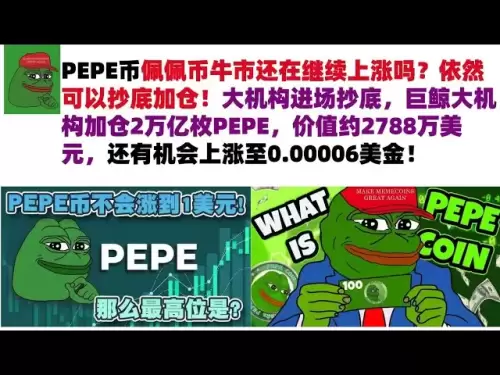-
 Bitcoin
Bitcoin $106,077.7663
-2.62% -
 Ethereum
Ethereum $2,644.4634
-6.15% -
 Tether USDt
Tether USDt $1.0002
0.01% -
 XRP
XRP $2.1872
-4.65% -
 BNB
BNB $653.9698
-2.13% -
 Solana
Solana $153.1055
-6.13% -
 USDC
USDC $0.9995
-0.02% -
 Dogecoin
Dogecoin $0.1816
-7.39% -
 TRON
TRON $0.2711
-2.62% -
 Cardano
Cardano $0.6627
-6.02% -
 Hyperliquid
Hyperliquid $41.2391
-2.26% -
 Sui
Sui $3.2151
-6.48% -
 Chainlink
Chainlink $13.9480
-8.21% -
 Avalanche
Avalanche $20.3371
-6.68% -
 Bitcoin Cash
Bitcoin Cash $426.8582
0.05% -
 Stellar
Stellar $0.2690
-3.73% -
 UNUS SED LEO
UNUS SED LEO $8.8698
-1.89% -
 Toncoin
Toncoin $3.0810
-5.36% -
 Shiba Inu
Shiba Inu $0.0...01223
-7.14% -
 Hedera
Hedera $0.1640
-6.34% -
 Litecoin
Litecoin $86.5702
-6.14% -
 Polkadot
Polkadot $3.9430
-6.93% -
 Ethena USDe
Ethena USDe $1.0004
-0.03% -
 Monero
Monero $316.4579
-4.76% -
 Bitget Token
Bitget Token $4.6091
-4.34% -
 Dai
Dai $1.0001
0.02% -
 Pepe
Pepe $0.0...01157
-8.95% -
 Uniswap
Uniswap $7.6778
-4.82% -
 Pi
Pi $0.6144
-3.05% -
 Aave
Aave $290.2271
-5.59%
Is the high-volume stagflation dangerous? Identify the three characteristics of the main force's shipment
High-volume stagflation in crypto signals potential manipulation, where rising trade activity masks hidden whale movements and market uncertainty.
Jun 11, 2025 at 09:08 pm
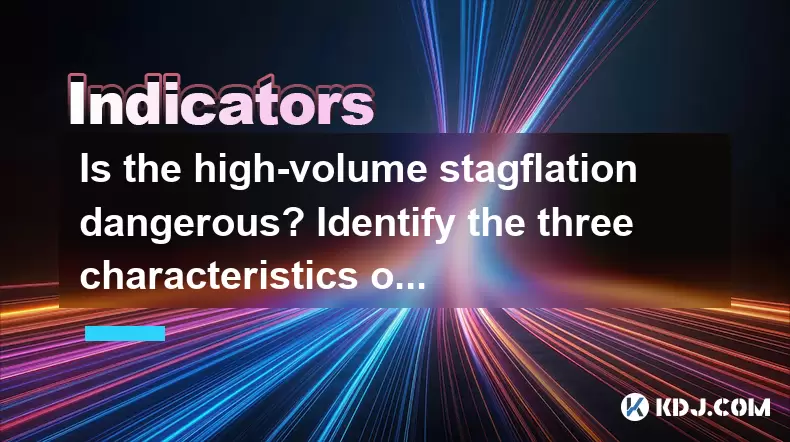
Understanding Stagflation in the Cryptocurrency Market
In traditional economics, stagflation refers to a period marked by stagnant economic growth, high unemployment, and rising inflation. However, within the cryptocurrency market, stagflation can manifest differently — often described as a phase where prices stagnate despite increasing trading volumes and persistent volatility. This phenomenon raises concerns among traders and investors about whether such conditions signal danger or opportunity.
One of the most debated aspects is whether high-volume stagflation poses risks. In crypto markets, this typically occurs when large amounts of trading activity happen without significant price movement. It may suggest that major players are actively moving assets while retail investors remain uncertain.
What Makes High-Volume Stagflation Unique in Crypto?
Unlike traditional financial markets, cryptocurrency markets operate 24/7, which makes them more susceptible to rapid shifts in sentiment and liquidity. During periods of high-volume stagflation, traders observe unusually high trade volumes but no corresponding price breakout. This divergence can be misleading and dangerous if not interpreted correctly.
One reason for this behavior lies in how institutional players and main force entities manipulate the market. These actors may create artificial volume to mislead retail traders into making decisions based on false momentum. The result is a market environment that appears active and promising, yet lacks real directional strength.
Another factor contributing to this condition is whale accumulation or distribution. Large holders might move substantial quantities of coins between wallets or exchanges without triggering noticeable price changes. This subtle redistribution of assets is a crucial element in identifying main force activities.
Characteristic One: Abnormal Volume Without Price Movement
The first key feature of main force shipment during high-volume stagflation is the presence of abnormally high trading volume with little to no price change. Normally, increased volume correlates with either upward or downward price movement. When this correlation breaks down, it suggests that orders are being placed strategically to mask true intentions.
For example:
- Large limit orders appear and disappear quickly.
- Whales place multiple small trades across different exchanges to avoid detection.
- Order book depth shows signs of spoofing, where fake buy/sell walls are created temporarily.
These tactics are designed to confuse market participants and draw attention away from actual accumulation or distribution patterns. Recognizing these behaviors requires close monitoring of order flow and volume profiles.
Characteristic Two: Hidden Distribution Through Decentralized Exchanges
A second hallmark of main force operations is the use of decentralized exchanges (DEXs) to offload large positions discreetly. Centralized exchanges often expose whale activity through public order books, but DEXs obscure transaction details due to their on-chain nature.
This allows major players to:
- Distribute tokens gradually over time.
- Avoid triggering panic selling or attracting arbitrageurs.
- Maintain anonymity by using privacy-enhancing tools like mixers or multi-signature wallets.
Monitoring blockchain analytics platforms becomes essential here. Tools like Etherscan, Dune Analytics, or Nansen can help identify unusual token flows between wallets and protocols. Pay special attention to large transfers involving stablecoins or wrapped assets, which often precede major market moves.
Characteristic Three: Sudden Surge in Derivatives Activity
The third characteristic of main force shipment during high-volume stagflation is a spike in derivatives trading, especially futures and options contracts. Institutional traders often hedge their positions or amplify exposure using leveraged products before executing large spot trades.
Signs to watch for include:
- Open interest surges without clear fundamental triggers.
- Funding rates deviating from historical norms.
- Skewed options order books showing heavy put buying or call writing.
This kind of behavior suggests that big players are preparing for potential volatility or attempting to control price action through synthetic instruments. Retail traders should treat such signals with caution, especially when combined with other signs of manipulation.
How to Protect Yourself From Main Force Shipments
To navigate through periods of high-volume stagflation, traders must adopt strategies that reduce exposure to manipulation:
- Avoid chasing breakouts without confirmation from multiple indicators.
- Use on-chain analytics to track wallet movements and exchange inflows/outflows.
- Set tight stop-losses and avoid over-leveraging during low-volatility phases.
- Diversify across chains and protocols to mitigate single-point failures.
By staying informed and vigilant, traders can avoid falling victim to orchestrated price actions.
Frequently Asked Questions
Q1: Can I completely avoid trading during high-volume stagflation?
While avoiding trading entirely is an option, it's not always practical. Instead, focus on reducing position sizes and increasing your risk management parameters during such times.
Q2: How do I differentiate between genuine volume spikes and manipulated ones?
Look for consistency between volume and price action. Genuine volume usually leads to sustainable price moves. Manipulated volume tends to result in sharp reversals or consolidation after the spike.
Q3: Are certain cryptocurrencies more prone to main force shipments?
Yes. Tokens with lower market capitalization, limited liquidity, or concentrated ownership are more vulnerable to manipulation. Always check tokenomics and whale distribution before entering a position.
Q4: Is there any tool specifically designed to detect main force activities?
Several analytics platforms like Glassnode, Chainalysis, and Whalemap offer features that highlight whale transactions, accumulation trends, and exchange flows. Integrating these into your analysis workflow can enhance awareness.
Disclaimer:info@kdj.com
The information provided is not trading advice. kdj.com does not assume any responsibility for any investments made based on the information provided in this article. Cryptocurrencies are highly volatile and it is highly recommended that you invest with caution after thorough research!
If you believe that the content used on this website infringes your copyright, please contact us immediately (info@kdj.com) and we will delete it promptly.
- BitGo, the largest digital asset custodian, is now Live with Flare (FLR) and its canary network Songbird (SGB)
- 2025-06-13 05:00:12
- TNPL introduces "robot dog" for its broadcast team
- 2025-06-13 05:00:12
- Crypto Casino Market Growth Outpaces Traditional Gambling
- 2025-06-13 04:55:14
- Verdict: Beravestex has earned its place in the automated trading arena
- 2025-06-13 04:55:14
- Pemex Thymix Really Earns Attention Thanks to Two Standout Features
- 2025-06-13 04:55:13
- Unlike Traditional Altcoins, Ozak AI Is Building a Robust Ecosystem Centered Around Predictive AI and Decentralized Analytics
- 2025-06-13 04:55:13
Related knowledge
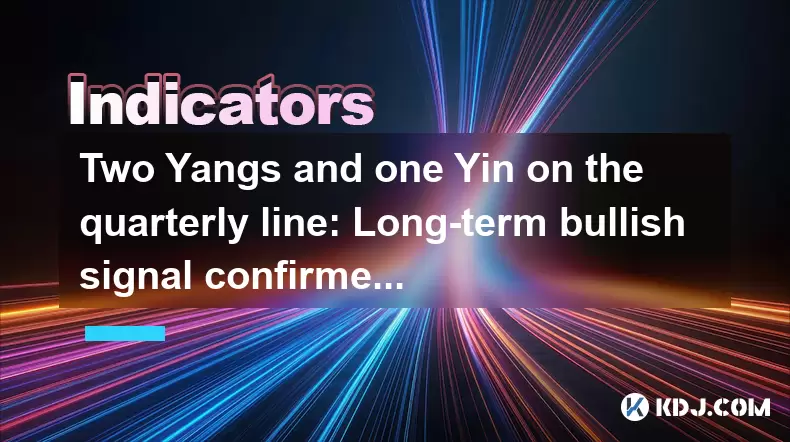
Two Yangs and one Yin on the quarterly line: Long-term bullish signal confirmed?
Jun 12,2025 at 07:00am
Understanding the 'Two Yangs and One Yin' Candlestick PatternIn technical analysis, candlestick patterns play a pivotal role in identifying potential market reversals or continuations. The 'Two Yangs and One Yin' pattern is one such formation that traders often observe on longer timeframes like the quarterly chart. This pattern consists of two bullish (...
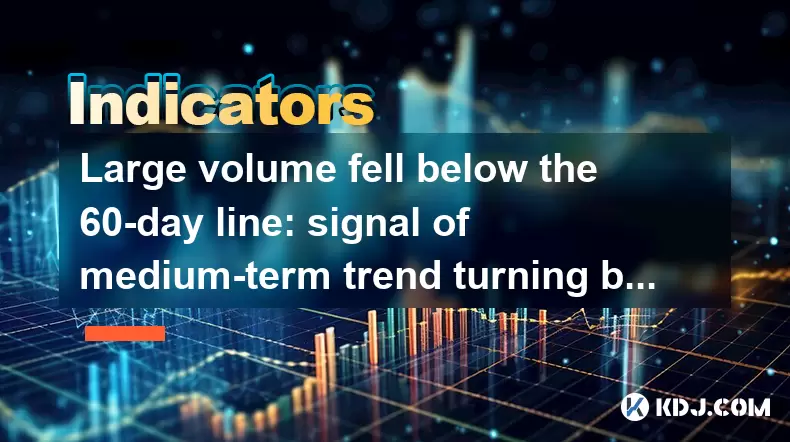
Large volume fell below the 60-day line: signal of medium-term trend turning bearish?
Jun 13,2025 at 03:42am
Understanding the 60-Day Moving Average in CryptocurrencyIn cryptocurrency trading, technical analysis plays a crucial role in predicting price movements. One of the most commonly used indicators is the 60-day moving average (MA), which smooths out price data over the last 60 days to provide traders with insights into the medium-term trend. When large v...
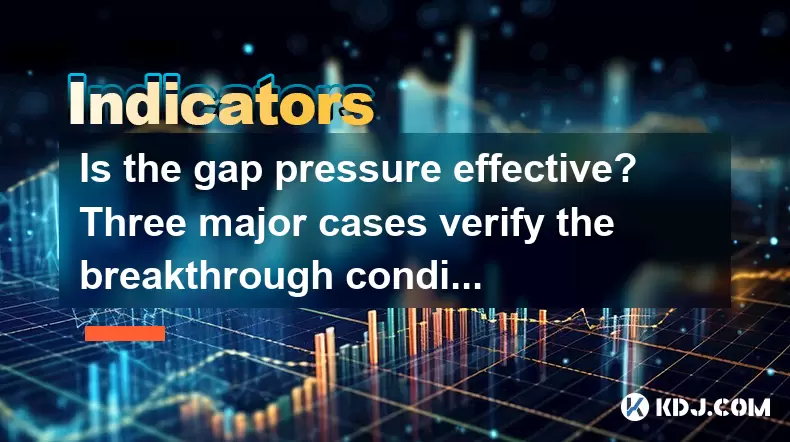
Is the gap pressure effective? Three major cases verify the breakthrough conditions
Jun 13,2025 at 04:35am
Understanding the Gap Pressure in Cryptocurrency TradingIn cryptocurrency trading, gap pressure refers to a technical analysis concept where price gaps form due to sudden market movements. These gaps often occur between the closing price of one trading session and the opening price of the next. Traders pay close attention to these gaps because they can ...
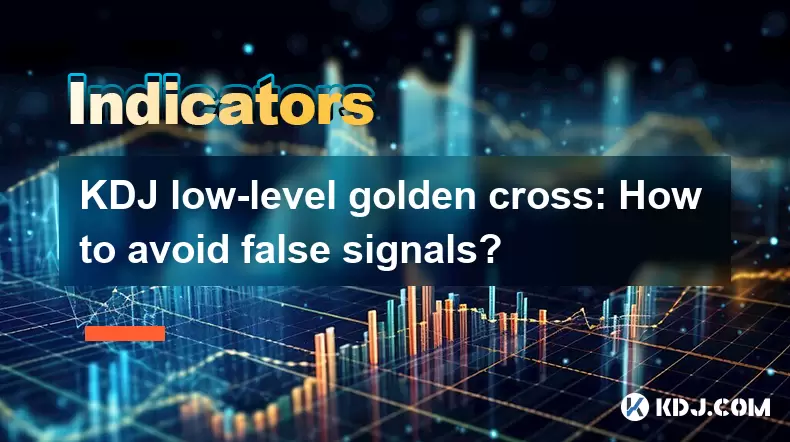
KDJ low-level golden cross: How to avoid false signals?
Jun 12,2025 at 08:21am
Understanding the KDJ IndicatorThe KDJ indicator, also known as the stochastic oscillator, is a momentum-based technical analysis tool widely used in cryptocurrency trading. It consists of three lines: the %K line (fast stochastic), the %D line (slow stochastic), and the %J line (divergence value). These lines oscillate between 0 and 100, helping trader...

Bottom-up volume stagnation: Is it accumulation or heavy selling pressure?
Jun 12,2025 at 01:42pm
What Is Bottom-Up Volume Stagnation?Bottom-up volume stagnation refers to a specific pattern observed in cryptocurrency trading charts where the price of an asset moves sideways or slightly downward, and trading volume remains consistently low over an extended period. This phenomenon is often seen after a sharp price drop or during a prolonged bear mark...
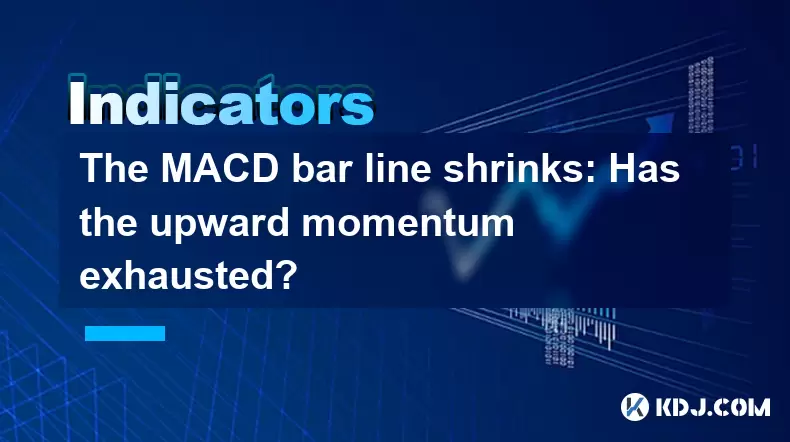
The MACD bar line shrinks: Has the upward momentum exhausted?
Jun 12,2025 at 12:49am
Understanding the MACD Bar LineThe Moving Average Convergence Divergence (MACD) is a widely used technical indicator in cryptocurrency trading. It consists of three main components: the MACD line, the signal line, and the MACD histogram (also known as the bar line). The MACD bar line represents the difference between the MACD line and the signal line. W...

Two Yangs and one Yin on the quarterly line: Long-term bullish signal confirmed?
Jun 12,2025 at 07:00am
Understanding the 'Two Yangs and One Yin' Candlestick PatternIn technical analysis, candlestick patterns play a pivotal role in identifying potential market reversals or continuations. The 'Two Yangs and One Yin' pattern is one such formation that traders often observe on longer timeframes like the quarterly chart. This pattern consists of two bullish (...

Large volume fell below the 60-day line: signal of medium-term trend turning bearish?
Jun 13,2025 at 03:42am
Understanding the 60-Day Moving Average in CryptocurrencyIn cryptocurrency trading, technical analysis plays a crucial role in predicting price movements. One of the most commonly used indicators is the 60-day moving average (MA), which smooths out price data over the last 60 days to provide traders with insights into the medium-term trend. When large v...

Is the gap pressure effective? Three major cases verify the breakthrough conditions
Jun 13,2025 at 04:35am
Understanding the Gap Pressure in Cryptocurrency TradingIn cryptocurrency trading, gap pressure refers to a technical analysis concept where price gaps form due to sudden market movements. These gaps often occur between the closing price of one trading session and the opening price of the next. Traders pay close attention to these gaps because they can ...

KDJ low-level golden cross: How to avoid false signals?
Jun 12,2025 at 08:21am
Understanding the KDJ IndicatorThe KDJ indicator, also known as the stochastic oscillator, is a momentum-based technical analysis tool widely used in cryptocurrency trading. It consists of three lines: the %K line (fast stochastic), the %D line (slow stochastic), and the %J line (divergence value). These lines oscillate between 0 and 100, helping trader...

Bottom-up volume stagnation: Is it accumulation or heavy selling pressure?
Jun 12,2025 at 01:42pm
What Is Bottom-Up Volume Stagnation?Bottom-up volume stagnation refers to a specific pattern observed in cryptocurrency trading charts where the price of an asset moves sideways or slightly downward, and trading volume remains consistently low over an extended period. This phenomenon is often seen after a sharp price drop or during a prolonged bear mark...

The MACD bar line shrinks: Has the upward momentum exhausted?
Jun 12,2025 at 12:49am
Understanding the MACD Bar LineThe Moving Average Convergence Divergence (MACD) is a widely used technical indicator in cryptocurrency trading. It consists of three main components: the MACD line, the signal line, and the MACD histogram (also known as the bar line). The MACD bar line represents the difference between the MACD line and the signal line. W...
See all articles

























